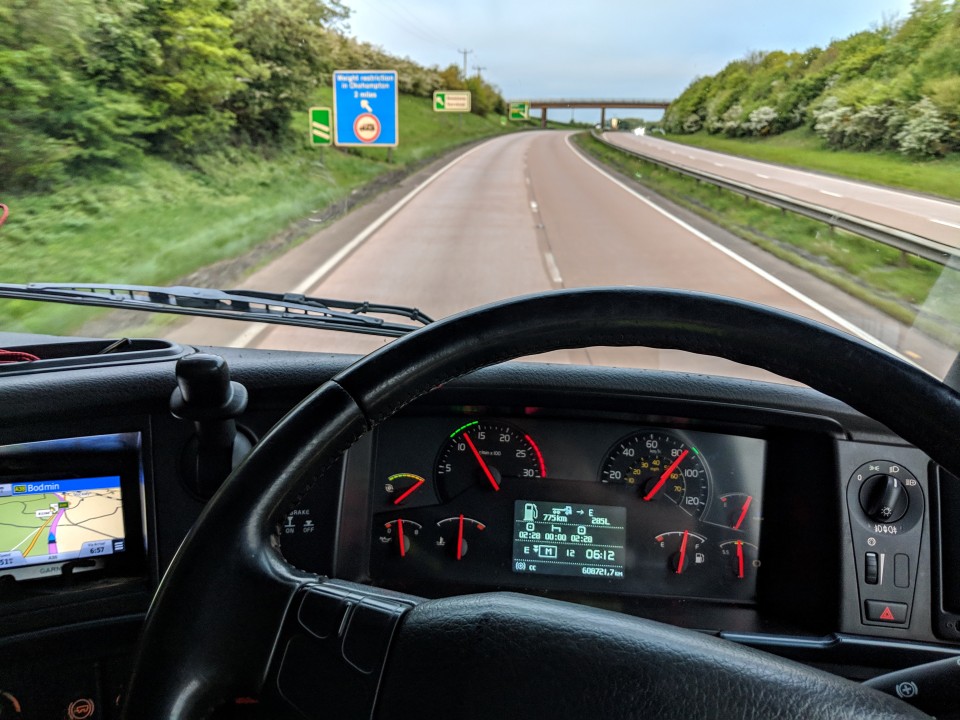
Susie Jones
Tachograph rules made easy
Created: 01/08/2024
•
Updated: 08/08/2024
The world of tachograph rules can be a confusing place for the most experienced truck driver. Let alone for anyone new entering the industry. We aim to clear up some of that confusion.
What is a tachograph and why do we have them?
According to the dictionary, a tachograph is “a device that is put in vehicles such as lorries and coaches in order to record information such as how fast the vehicle goes, how far it travels, and the number of breaks the driver takes.”
The purpose of a tachograph is to prevent driver fatigue and ensure drivers and employers adhere to the rules. Road safety charity Brake reported that “four in ten tiredness-related crashes involve someone driving a commercial vehicle.” Therefore, tachograph rules play a vital part in aiming to reduce this number.
When do you need a tachograph?
You need to fit a tachograph if your gross vehicle weight exceeds three and a half tonnes. It’s important to remember that this includes towing a trailer. There are a few exceptions to this rule:
• If you only drive off public roads
• If the vehicle is driven by armed forces, police, or fire brigade
• If you are a commercial fleet and use vehicles with a maximum weight of seven and a half tonnes, and your journey is less than 100km from your operating base.
• If you are carrying goods and your vehicle is electric
• If you are carrying equipment or machinery for the driver’s use, and driving this vehicle is not your main work.
What are the different types of tachographs?
There are three different types of tachographs:
• Analogue: These were made compulsory in Europe in 1986. Analogue tachographs use wax paper sheets to record driver data. Drivers manually input the details and insert them into a tachograph device.
• Digital: These were introduced in 2006. Used by more than one million transport companies and over six million professional drivers. Digital tachographs record driver data on an internal storage device and driver card.
• Smart: From June 2019, the European Union required companies to use smart tachographs. These automatically record the vehicle’s location at the beginning and end of each journey. They also provide updates every three hours
What does each tachograph symbol mean?
Check out our video explaining each tachograph symbol
Break rules
For the safety of the truck driver and everyone else on the road, break rules must be followed. We’ve broken down the key points.
Driving time:
• Can be no longer than four-and-a-half hours before a break
Breaks:
• Must be at least 45 minutes unless a driver takes a rest period
Rest period:
• During a rest period, driving, or any other work cannot be carried out
Splitting breaks:
• A full 45-minute break can be split by a 15-minute break followed by a 30-minute one
• Splitting breaks must be distributed over the four-and-a-half hours of driving time
• Under EU rules, if breaks are split, the second break needs to be at least 30 minutes.

Daily driving limit
The daily driving limit refers to the maximum driving time in a day. Nine hours is the maximum, but this can be increased to 10. However, this can’t be done more than twice in a fixed week. Daily driving time can be defined as:
• The total accumulated driving time between the end of a daily rest period and the beginning of the following daily rest period
• The total accumulated driving time between a daily rest period and a weekly rest period. .
Weekly and two-weekly driving limit
Drivers need to ensure they don’t exceed the maximum weekly and two weekly driving limits.
• The maximum weekly driving limit is 56 hours (applies to a fixed week)
• A fixed week starts at 00.00 and finishes at 24.00 the following Sunday
• A two-weekly driving limit is 90 hours.
Daily rest
Additionally, daily rest must be taken.
• Driver must take 11 continuous hours of rest. This can be reduced to nine
• This reduction can only happen up to three times between weekly rest periods
• The rest period must be completed within 24 hours at the end of the last daily or weekly rest period.
Daily rest can be taken in the vehicle; however, suitable sleeping facilities are required. If these facilities are absent, the driver must find accommodation. Check out our locations page to find out which truck stops offer this service.
Weekly rest
Weekly rest periods must be taken no later than at the end of six consecutive 24-hour periods from the end of the last weekly rest.
• Drivers are required to take at least 45 hours of rest
• They can take a reduced weekly rest of at least 24 hours
• Reduced weekly rest needs to be compensated in one block, and at least nine hours before the end of the third week.
Although reduced rest can be taken, it’s worthwhile to note that in two consecutive weeks where reduced rest has been taken, one must be 45 hours long.

Multi manning
Some drivers can take another driver on board. The benefits include increased productivity, higher mileage covered, and longer drive time.
• Both drivers must take nine hours of daily rest
• This daily rest must be taken within 30 hours rather than 24.
• The first hour of multi-manning doesn’t require another driver. After one hour it becomes compulsory.
Ferry crossings or train journeys
As stated above a driver’s regular daily rest period must be 11 continuous hours, however, there are a few exceptions to this rule. Providing the vehicle is accompanied by the driver; daily rest periods can be interrupted twice but must not exceed one hour in total. For example, embarkation and disembarkation for ferries and trains.
If the regular daily rest period is interrupted in this manner, the accumulated rest period must be at least 11 hours or 12 if split.
What is the one-minute tachograph rule?
The one-minute rule came into effect in October 2011. It refers to older legislation that detailed that a minute with at least five seconds of driving had to be logged as drive time. However, the EU changed this legislation so the single longest continuous activity taken within a minute will be logged against that specific activity.
What would happen if I didn’t follow the tachograph rules?
Failing to comply with the tachograph rules can result in fines and sometimes imprisonment. Generally, the punishment depends on breach severity. Most tachograph violations are dealt with fixed penalties. Drivers have up to 28 days to consider fixed penalties.
There are two types of fines and penalties in the UK.
• Level Four Fine: These are capped at £2,500; this cap is for each tacho fine. However, cases with multiple level four infringements could face a maximum fine per infringement.
• Level Five Fine: These are capped at £5,000, however, as with level four fines, cases with multiple infringements could face the maximum fine.
Tachograph rules can be tricky to get your head around. However, not following them could lead to safety problems and potential fines. By understanding and following the rules, fleets and drivers can operate their vehicles safely and legally. It’s critical to note that tachograph rules and regulations may vary by country.



